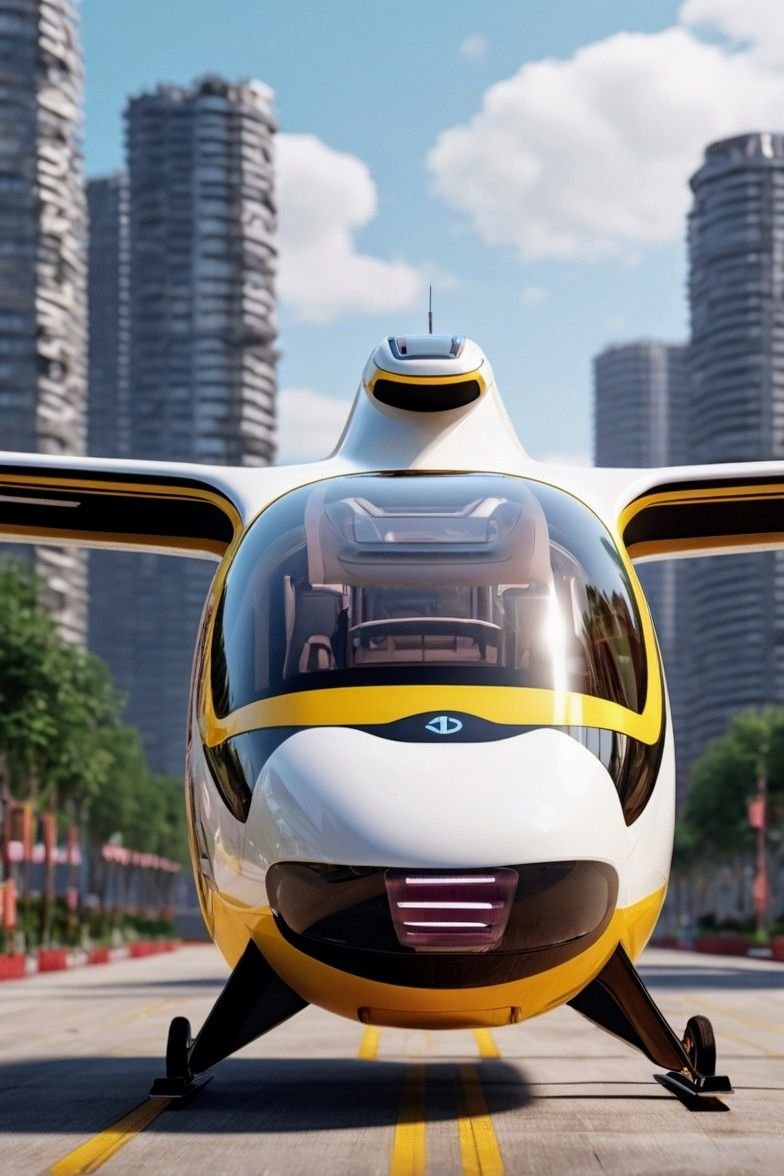AI-Generated Image. Article: China Launches World’s First AI Flying Taxi Services by Tech Is The Culture
The Sky’s No Longer The Limit Thanks To Chinas AI Flying Taxi Services
Move over, The Jetsons China just turned your retro-futuristic daydreams into a boarding pass. On April 2, 2025, the Civil Aviation Administration of China (CAAC) greenlit the world’s first commercial autonomous flying taxi services, catapulting urban mobility into the stratosphere. The permits went to EHang Holdings and Hefei Hey Airlines, two pioneers in a sector Beijing is betting will redefine its economy and possibly the global transportation race. Buckle up (or don’t these cabs fly themselves) as we dive into how China’s skies became the new asphalt.
The EH216-S A Drone Big Enough For Humans (And Hopes)
Let’s start with the star of the show the EHang’s EH216-S, an electric vertical takeoff and landing (eVTOL) vehicle that looks like a cross between a sci-fi escape pod and a very determined octopus. This two-seater autonomous aircraft boasts 16 propellers, a carbon-fiber fuselage, and a top speed of 81 mph enough to outpace downtown traffic while giving passengers a literal bird’s-eye view of gridlock misery below.
The EH216-S isn’t just a fancy drone; it’s a regulatory trailblazer. In October 2023, it became the first eVTOL to secure a type certificate from the CAAC, validating its safety after tests ranging from crash simulations to software stress tests. By April 2024, it cleared production certification, paving the way for mass manufacturing a global first for autonomous passenger drones. Now, with air operator certificates in hand, EHang is ready to launch short-distance tourism routes in Guangzhou and Hefei, with plans to expand into urban commutes and airport shuttles.
Hu Huazhi, EHang’s CEO, summed up the milestone with understated pride: “We are one step closer to realizing our goal of making urban air mobility accessible to everyone.” Translation: Your Uber Eats delivery might soon arrive via airmail.
Regulatory Gymnastics (China Built A Sky Highway For It’s New AI Flying Taxi Services)
China’s flying taxi rollout wasn’t just about engineering it was a masterclass in bureaucratic agility. The CAAC’s approval process involved four critical stamps:
- Type Certificate: Proving the EH216-S won’t disintegrate mid-flight.
- Production Certificate: Ensuring factories can churn out these sky cabs without cutting corners.
- Airworthiness Certificate: Confirming each vehicle isn’t a death trap.
- Air Operator Certificate: Letting companies actually use them.
This regulatory sprint aligns with Beijing’s push to dominate the “low-altitude economy” a sector spanning drones, blimps, and flying cars projected to be worth $207 billion by 2025. Cheng Bolin of the China Information Association called it “a new growth driver” and “an important engine for high-speed development.” Translation: China’s economy needs more than just TikTok and cheap solar panels.
Meanwhile, the U.S. lags, targeting 2028 for commercial eVTOLs. As EHang’s taxis soar, America’s FAA is still scribbling rulebooks.
Autonomization (No Pilot, No Problem)
Here’s the kicker: These taxis don’t just fly they think. The EH216-S relies on preset routes, 5G connectivity, and a ground-based command center to navigate. No joysticks, no panic buttons just algorithms and audacity.
Safety? EHang claims over 40,000 test flights without “major incidents,” though skeptics note that “major” is doing heavy lifting there. The CAAC insists on strict maintenance protocols and operational limits, like capping initial flights at 10,000 feet and 22-mile ranges. Still, imagine explaining to your insurance agent that a rogue propeller clipped a skyscraper.
The Low-Altitude Gold Rush: Who’s Joining The Party?
EHang isn’t skywalking alone. Domestic rivals like Xpeng and Geely are developing their own eVTOLs, while foreign giants Boeing, Airbus, Embraer scramble to catch up. Even Saudi Arabia trialed EHang’s taxis for ferrying Hajj pilgrims in 2024, proving the tech isn’t just for sightseeing.
But challenges loom. Public skepticism, air traffic control hurdles, and the looming specter of “skyjams” could ground progress. As Moriba Jah, a space traffic expert, once stated: “Regulating airspace is like herding cats, but with more liability waivers.”
From Tourism To Traffic Jams What’s Next for China’s AI Flying Taxi Fleet?
For now, EHang’s taxis will focus on scenic joyrides think aerial tours of Guangzhou’s skyline or Huangshan’s misty peaks. But the endgame is urban integration. Picture hopping from Shenzhen to Hong Kong in 20 minutes or zipping to the airport without a highway in sight.
The CAAC’s 2035 roadmap aims for fully autonomous, large-scale services, complete with insurance frameworks and noise regulations. By then, your daily commute might involve more altitude adjustments than lane changes.
The Sky’s The Floor
China’s flying taxi launch isn’t just a tech flex it’s a statement. While the West debates ethics and red tape, Beijing is busy turning sci-fi into GDP. Sure, there are hurdles: battery limits, public trust, and the existential dread of falling. But as EHang’s cabs ascend, one thing’s clear: The future of transportation isn’t on the ground it’s in the clouds.
Now, if you’ll excuse us, we’re off to invest in parachute fashion.
Let us know your thoughts on the subject at techistheculture.bsky.social. Keep ahead of the game with our newsletter & the latest tech news.
Disclaimer: This article contains some AI-generated content that may include inaccuracies. Learn more [here].



